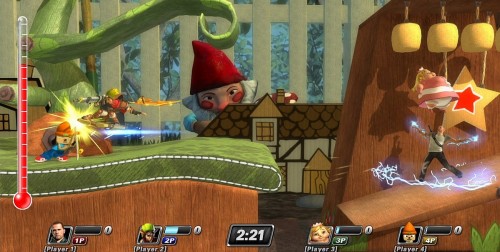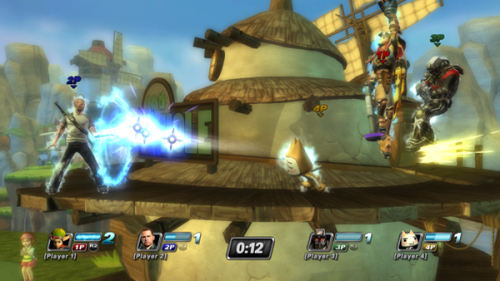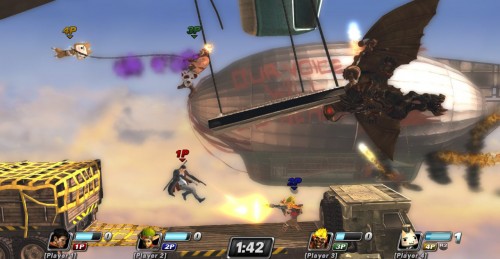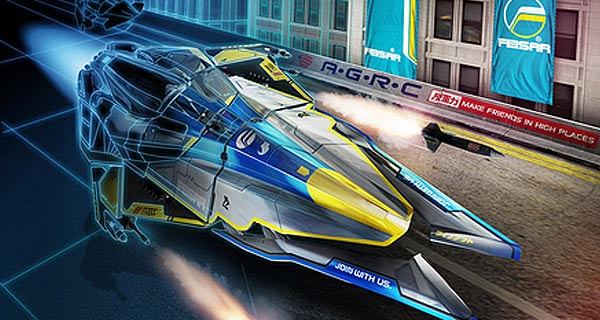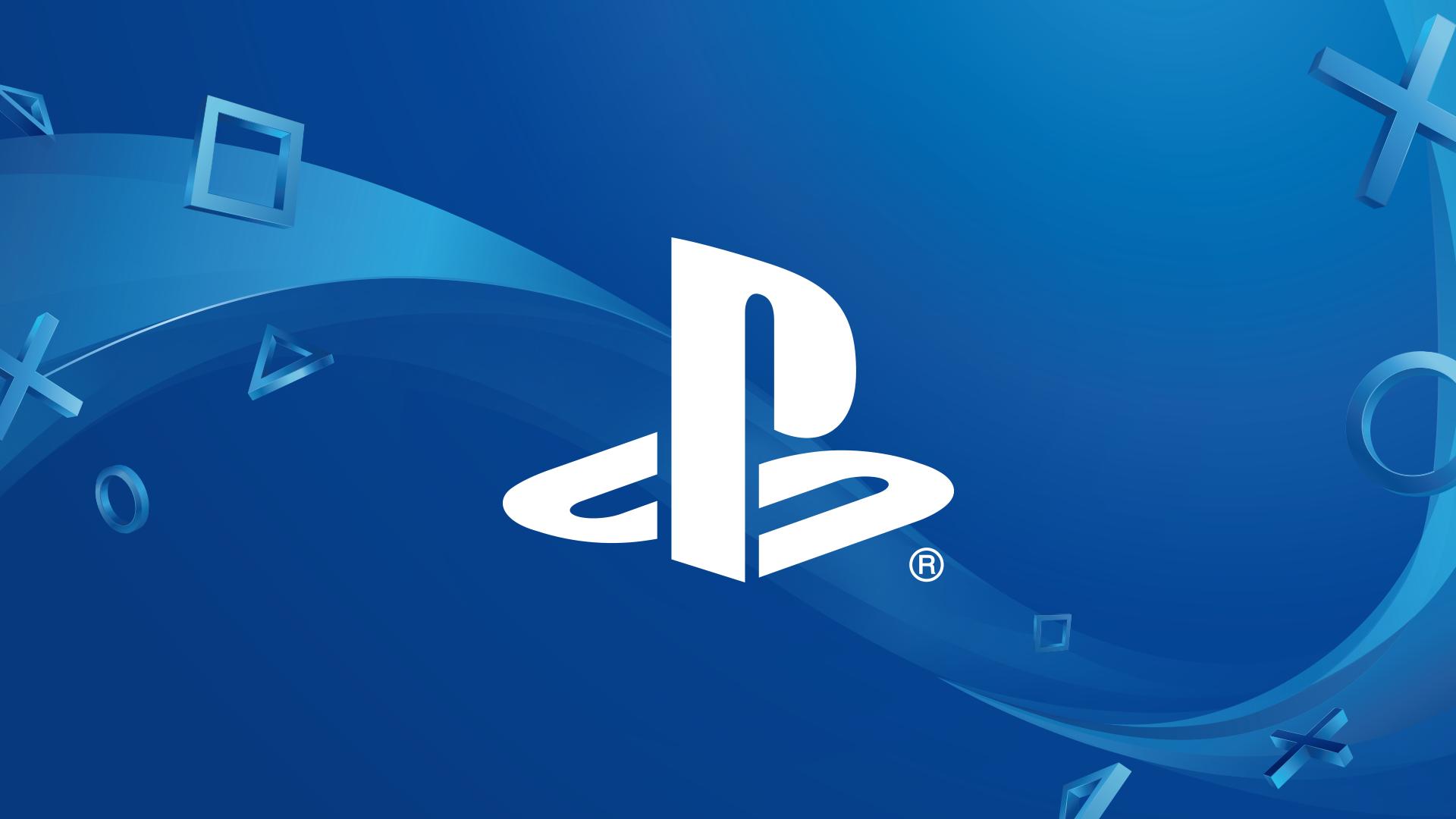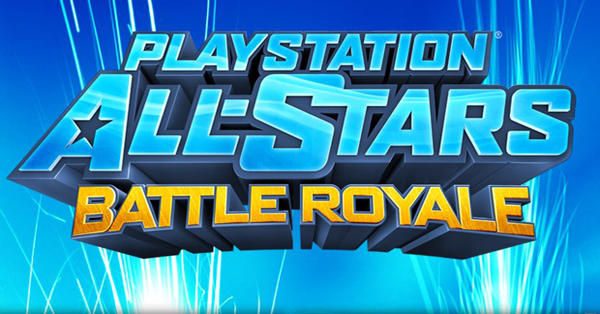
Jak and Daxter vs Kratos, who would win? If that kind of question has ever passed through your mind, then I’ve got exactly the right game for you today. You may not have heard of the game’s developer, SuperBot Entertainment before. They’ve only been around since 2009, after all, but they’re an independent studio that’s worth watching. Although seperate from Sony itself, they’re basically a second-party developer for them. SuperBot’s first project is a very ambitious one, one which brings together many of the PlayStation brand’s biggest, most well known characters for the first time. While SuperBot worked on the PlayStation 3 title, Bluepoint Games took on the job of getting the game running on the PlayStation Vita, and that’s the version I’m reviewing today. As an action fighting game which serves as a cross-over for many franchises, the game has often been compared to (and called a copy of) Nintendo’s Super Smash Bros. series. The good news is that those comments are largely unjustified, as PlayStation All-Stars Battle Royale (PSABR) is a really good game in its own right.
PlayStation All-Stars Battle Royale features a star studded range of 20 different characters. Many of the major characters that we’ve come to know on Sony’s consoles are present, including Sackboy (LittleBigPlanet series), Cole McGrath (inFamous series), Ratchet & Clank, Sly Cooper, Raiden (Metal Gear Solid series), Nathan Drake (Uncharted series) and Kratos (God of War series). These big names are joined by some lesser known characters as well, including Fat Princess, Parappa the Rapper (from the series of the same name), Sir Daniel Fortesque (MediEvil series), Nariko (Heavenly Sword), and Sweet Tooth (Twisted Metal series). There’s also a couple of third-party characters in the mix, such as the Big Daddy (Bioshock series). Getting down to business, PSABR‘s basic gameplay consists of 2-4 characters battling it out in one of the game’s many arenas. All fighting takes place on a single 2D plane, with characters moving in four directions: up, down, left and right.
Characters jump by pressing the X button, and perform attacks with the Square, Triangle, and Circle buttons in combination with simple directional inputs. Simply pressing the Square button will perform one attack (for example, Ratchet makes a simple strike with his wrench), while pressing forward on the analog stick at the same time will perform a totally different one (Ratchet throws his wrench a short distance). Each button has four moves assigned to it, one neutral attack, and three for the directional inputs (up, down, and left/right). Performing these attacks feels quite natural, and with each character having 12 different moves (along with aerial versions of them), there’s plenty of variety. These moves can be chained together into combos, and it’s here that much of the game’s depth lies. There are a number if different combos that each character can make use of, and fortunately, the game’s Trials mode teaches you how to perform some of them. Tieing in with this, one of the best parts of the game is the fact that every character plays completely differently. There’s no clones or reused moves to be seen, and every attack feels authentic, featuring animations that stay true to the characters’ roots. Each character has a unique movelist, and the game encourages both casual and dedicated players alike to make use of everything on offer.
Unlike most games of this type, PSABR‘s characters don’t have health, or any kind of damage meter. Instead, the only way to KO your opponents is to hit them with a super attack. Each character has three super attacks, and each one is more powerful than the last. Super attacks require All-Star Points (AP) to perform, and this amount increases depending on which attack you wish to execute. Performing combos is important for gathering AP at a decent rate, as the amount you receive increases greatly as you land hits. If your super attack connects, then you’re rewarded with a satisfying explosion of Square, Cross, Circle, and Triangle symbols as your opponent is destroyed. This system might sound a bit weird at first, but it actually levels the playing field quite a bit. Less skilled/experienced players don’t have to worry too much about getting knocked about by others, since they can’t actually die or lose points from that alone. Thats’s not to say that the game is perfectly balanced (it isn’t), but it’s balanced enough that it never feels unfair. The game offers a couple of different battle types, you can choose to have a free for all, or form two teams of two players. You can further modify these by giving them a time limit, kill limit, or having a stock battle. These options are very welcome, since they allow you to play the game your way, and at whichever pace you choose. All of these battle types are available in the PSABR‘s online multiplayer mode, which functions well with minimal lag, and also allows you to take on people who are playing the PlayStation 3 version.
Every character has their own story in the Arcade mode, and this is where the bulk of the game’s single player content lies. Each story has an opening cinematic to introduce it, but they’re composed of little more than a couple of still images with some voiced dialogue playing in the background. They feel rather rushed, perhaps even unfinished. Aside from the opening story, the Arcade mode is comprised of 6 regular fights against various opponents, followed by a rival fight. These rival fights are the only real highlight of the mode, since they allow for some more fleshed out dream match ups. Each of the 20 playable characters serves as the rival of one of the others, and so the roster of characters is split into 10 distinct rivalries. Some of them make a fair bit of sense, like Jak and Daxter vs Ratchet and Clank (the PlayStation 2′s two iconic platforming duos), and Nathan Drake vs Sly Cooper (as rival treasure hunters). On the other hand, some feel rather forced, like Kratos vs Sweet Tooth. They’re in a fight to the death because Kratos destroyed Sweet Tooth’s…ice cream cone. Serious business. It’s all pretty light hearted fun though, regardless of reasoning, and it’s nice to see that SuperBot at least tried to give the fights a bit of context. Unlike the opening, these are true cinematics, being fully animated using the characters’ 3D models. These rivalry cinematics are short, but fairly amusing.
Once you’re past the rival fight, you’ll come across Polygon Man, who acts as the Arcade mode’s boss. It’s not surprising if you haven’t heard of him before, as his first and only appearances date back to 1995. Polygon Man was the original mascot for the PlayStation brand, way back in the days leading up to the release of the first console. Although Sony’s American branch had big plans for him, he only ended up appearing in a couple of magazine ads, since then-CEO Ken Kutaragi was not impressed by the character. PlayStation All-Stars makes use of his original design, but the character himself doesn’t directly fight you, instead he sends out a few waves of polygon characters to do his dirty work. After defeating each successive wave he’ll briefly be open to attack, and after three rounds of damage, he’ll relinquish his power to the character who defeated him. Said power usually plays a part in the character’s ending cinematic (which is unfortunately presented in the same style as the opening).
The attention to detail in almost all aspects of the game is great. There’s plenty of nice little touches here and there, such as Ratchet putting on his Oxygen mask when he enters water, the various characters’ defeat animations that play after each match, and the ways that you can interact with the game’s numerous stages. There’s 20 of these in all, an impressive number for this kind of game. That said, not all of them are particularly fancy, since 6 of these are merely simple practice stages. They can be selected and played like any regular stage, though. In any case, the other 14 stages are all creatively designed, of varying sizes, and some of them serve to represent even more PlayStation and third-party franchises. Loco Roco, Buzz: Quiz TV, and Patapon are there, as well as the surprise inclusion of a level based on the upcoming Bioshock Infinite. These stages feature various hazards to challenge players during the battle, and they often transform, as seen in the LittleBigPlanet stage where Buzz himself appears in the background and starts hosting his quiz show. This feature keeps the stages feeling fresh, and it’s a clever way for SuperBot to cram in even more references to the PlayStation brand. The stages have a life of their own, and it really adds to the atmosphere. There’s also a large number of items that can be picked up during battles, all of which are references to various games. If you don’t like them, SuperBot have included the option to turn them off if you desire.
Overall, PlayStation All-Stars Battle Royale is a big success. SuperBot have managed to prove themselves equal to the task of producing a fighter that is easy to pick up and play, while also offering a deeper experience for those who seek it. One of the game’s greatest accomplishments is the way that it takes so many different characters, from completely different worlds, and manages to make their interactions feel organic. Nobody feels particularly out of place, and this is one of the highest praises that can be given to a cross-over game. Despite a somewhat sloppy Arcade mode, the game excels as both an experience for a single person (thanks to the enjoyable online modes), as well as a party game for up to four players locally via ad-hoc. The game is also a part of Sony’s cross-buy promotion, where you get the Vita version for free if you purchase the PlayStation 3 one, for some extra value. If the premise appeals, and you’re looking for a fun fighting game that everyone can enjoy over the summer and beyond, PlayStation All-Stars Battle Royale is the game for you.
Easy to pick up and play, while still maintaining depth | Great attention to detail | Good online gameplay
Arcade mode feels rushed

